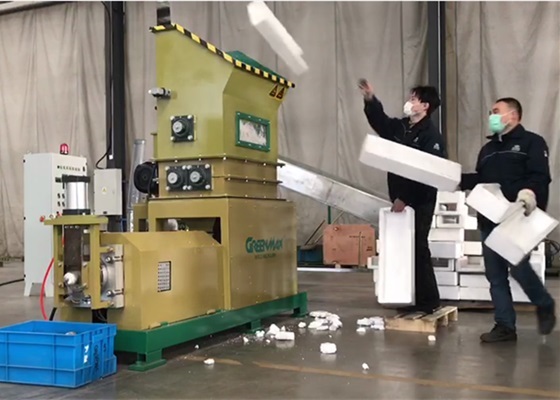Polystyrene Recycling 2025: Smarter Waste, Cleaner Future
Polystyrene is a widely used plastic known for its lightweight and insulating properties. Found in packaging materials, disposable food containers, electronics protection, and insulation panels, polystyrene—especially in its expanded form (EPS)—has become a staple of modern commerce and construction. However, this convenience comes at a cost: polystyrene is notoriously difficult to recycle and is often labeled as an environmental threat.
Yet with advancements in recycling technology and growing awareness around circular economy solutions, polystyrene recycling is gaining traction. In this article, we’ll explore what polystyrene is, why recycling it matters, and how new methods are transforming waste into valuable resources.
What Is Polystyrene and Why Is It Problematic?
Polystyrene is a thermoplastic polymer that comes in several forms:
Expanded Polystyrene (EPS): Light, foamy material used in protective packaging and food trays.
Extruded Polystyrene (XPS): Denser, used for insulation and construction.
Solid Polystyrene (PS): Found in cutlery, CD cases, and medical trays.
Despite its versatility, polystyrene has long been criticized for its environmental impact:
It does not biodegrade easily, persisting in landfills and oceans.
Its light weight makes it prone to littering and wind dispersal.
Traditional recycling centers rarely accept EPS, as it's 95–98% air and costly to transport.

Why Polystyrene Recycling Matters
Recycling polystyrene offers multiple benefits:
Reduces landfill waste: Prevents EPS from taking up large volumes in disposal sites.
Conserves resources: Recycled polystyrene can replace virgin plastic in new products.
Supports circular economy: Encourages manufacturers to close the loop on waste.
Countries and cities around the world are now phasing out single-use EPS and investing in infrastructure that can collect, compact, and reuse polystyrene waste. Consumer pressure is also driving brands to switch to recyclable materials and improve their environmental footprint.
How Is Polystyrene Recycled?
Polystyrene recycling involves collecting and reprocessing the material into new usable forms. The main methods include:
1. Mechanical Recycling
Involves crushing, compacting, and melting polystyrene into solid blocks or pellets.
Machines like foam densifiers or thermal melters reduce EPS volume by up to 95%.
Resulting material can be reshaped into photo frames, molding, construction boards, and more.
2. Chemical Recycling
Breaks polystyrene down into its monomers using solvents or heat.
Allows for near-virgin-quality plastic to be recreated.
Still under development and cost-intensive but holds promise for large-scale recovery.
3. Drop-off and Mail-Back Programs
Some recycling companies and retailers now accept clean EPS packaging at collection centers.
Programs like GREENMAX, and local councils are making access easier for households and small businesses.
Real-World Applications of Recycled Polystyrene
Recycled polystyrene isn’t just trash reborn—it’s a valuable raw material. It’s used in:
- Picture frames and crown molding
- Architectural insulation
- Plastic lumber and pallets
- Protective packaging
- Stationery products and office supplies
Many of these products are manufactured using compacted EPS ingots made from recycled foam using specialized equipment, reducing the need for petroleum-based virgin plastics.
Innovations in Polystyrene Recycling: GREENMAX Machines
One of the key technologies revolutionizing this field is the GREENMAX Foam Recycling Machine, developed by INTCO Recycling. These machines allow businesses to:
Collect and compact loose EPS foam on-site
Choose between cold compaction and thermal melting
Create high-density recycled material ready for resale
By investing in equipment like the GREENMAX M-C50 or A-C100 series, companies not only reduce disposal costs but also generate revenue from the recycled outputs.

Best Practices for Polystyrene Recycling
To make recycling effective:
- Clean the foam: Remove food residues or labels.
- Separate materials: Don’t mix with other plastics or contaminants.
- Check local programs: Not all areas accept EPS in curbside bins.
- Educate consumers: Promote drop-off points and proper disposal.
Conclusion: From Problem to Opportunity
While polystyrene has long been seen as a recycling headache, today’s technologies and global sustainability movements are changing that narrative. By adopting smart collection strategies and machines like GREENMAX, we can transform foam waste into valuable materials and reduce our environmental footprint.
Whether you're a packaging supplier, retailer, logistics company, or local council, polystyrene recycling offers both ecological and economic benefits. It’s no longer just about waste management—it's about creating a cleaner, circular future.
